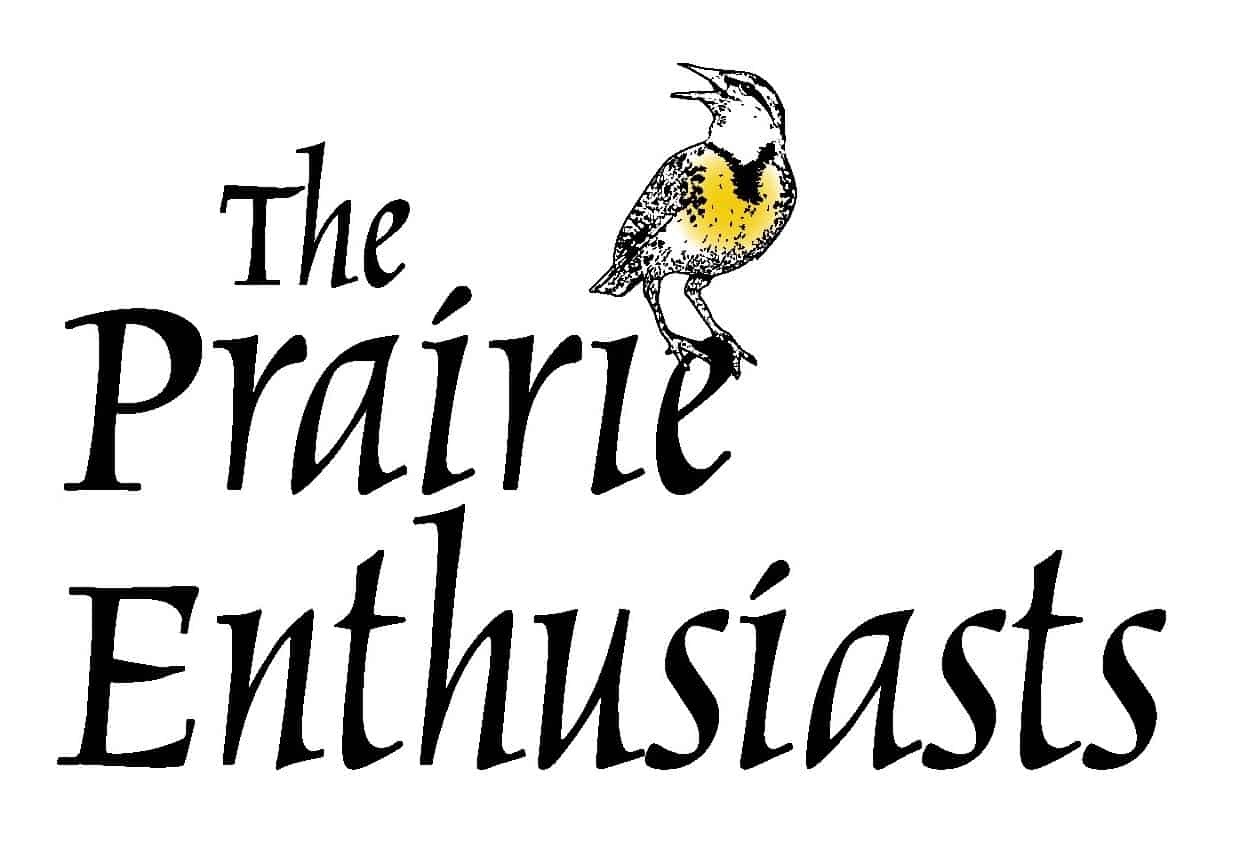This article was a collaboration with Pamela Eyden.
Motivated to reverse habitat loss and fragmentation, a team of private landowners (the Pleasant Valley Pollinator Corridor or PVPC Team) began this spring to work toward creating a pollinator corridor in Pleasant Valley outside Winona, Minn. These landowners have worked for many years to manage natural areas and establish native plantings on their own private properties. Creating a corridor of native habitats in the 10-mile long valley was a new step.
Restoring high-quality remnant bluff prairies and oak savannas has been an important focus. Gabe Ericksen, a longtime TPE member and owner of LandSpirit Design Landscaping, worked with the private landowners and the local Minnesota Driftless chapter of TPE to coordinate the restoration of 30 acres on Bluff Prairie. As the name suggests, this prairie is on a steep bluff that rises out of the hillside near the entrance to Pleasant Valley (see photo).
Trees and woody vegetation had encroached on the bluff; these were the first to go. The group is now re-vegetating the site with seed collected there, doing prescribed burns to manage the brush, and continuing work on the savanna below the prairie. They are also monitoring and documenting endangered species such as the rusty-patched bumblebee, endangered skipper butterflies, and race runner lizards.

Bluff Prairie at the entrance to Pleasant Valley. Photo by Gabe Ericksen
Here is a drone video of Bluff Prairie by Gabe Ericksen, taken during a spring burn in March 2020:
https://www.facebook.com/772973708/videos/pcb.10159401137478709/10159401134023709
Another view, from a workday in December 2019:
https://www.facebook.com/stephen.winter.395/videos/10159024455503709
The second focus is to add pollinator habitat on private homeowner properties throughout the valley. Led by Roberta Bumann, another TPE member and a Minnesota Master Naturalist, the team partnered with Healthy Lake Winona, a Winona-based nonprofit, to apply for a Lawns to Legumes Demonstration Neighborhood grant from the Minnesota Board of Water and Soil Resources in the spring of 2020. This Minnesota state-funded grant is available to nonprofit organizations to assist residential homeowners in creating native plantings. It aims to provide habitat for the endangered rusty-patched bumblebee (last sighted in 2018 in Pleasant Valley) and other at-risk pollinators. The PVPC Team is working with homeowners to install four types of plantings: pocket gardens, rain gardens, pollinator meadows in yards or along roadsides, and pollinator-friendly shrubs and trees. Round 1 began in the spring of 2020 and is reflected in the Project Map below. Round 2 will begin this fall with an end goal of forty residential homeowners receiving grant funds.
Besides financial assistance, the PVPC Team created resources to support the project. These include a high-diversity seed mix for meadow and roadside plantings and a native plant plan for pocket gardens that uses seeds and plants appropriate for the ecoregion. The Team recognized that education and community support are critical for homeowner success in establishing and maintaining native plant habitats. They set up a coach-led structure that uses PVPC Team members as coaches who meet with each homeowner to guide their project. They also created a website for the project at www.pvpollinators.com.
As of last month, four individual pocket gardens have been installed. More landowners are working on site preparation in advance of planting pollinator meadows this fall. The grant project will continue and be evaluated for five years.
In addition to Ericksen and Bumann, the PVPC Team is comprised of John Carrier (Wildlife Biologist), Kim Ericksen (Database Specialist), Pamela Eyden (Healthy Lake Winona), Amanda Gentry (Winona County Soil & Water Conservation District), John Howard (City of Winona Sustainability Coordinator), Joshua Lallaman (Biologist), and Kaitlyn O’Conner (Prairie Moon Nursery).
Corridors connect habitats, allowing for wildlife and plant movement. They can help reestablish populations in core habitats and after prescribed burns, help increase genetic diversity, and help create habitat large enough to sustain populations. Connecting the core habitats of the stream buffers, valleys, wooded hillsides, oak savannas, and bluff prairies in the Pleasant Valley watershed promotes the health and proper functioning of this Driftless Area ecological system. By restoring bluff prairie and oak savanna and adding pollinator-friendly habitat, the Pleasant Valley Pollinator Corridor project aims to restore and enhance the fire-dependent ecosystems in Pleasant Valley for the benefit of all living therein – pollinators, plants, wildlife, and people.
Check out more photos of the project below!

Pleasant Valley Pollinator Corridor project map. Map by Amanda Gentry
 Pollinator meadow in a valley bottom. Photo by Roberta Bumann
Pollinator meadow in a valley bottom. Photo by Roberta Bumann
 Roadside pollinator meadow. Photo by Roberta Bumann
Roadside pollinator meadow. Photo by Roberta Bumann

Planting a pollinator pocket garden. Photo by Gabe Ericksen

Monarch caterpillar on butterflyweed (Asclepias tuberosa). Photo by Roberta Bumann

Rusty-patched bumblebee on Culver’s-root. Photo by Gabe Ericksen

